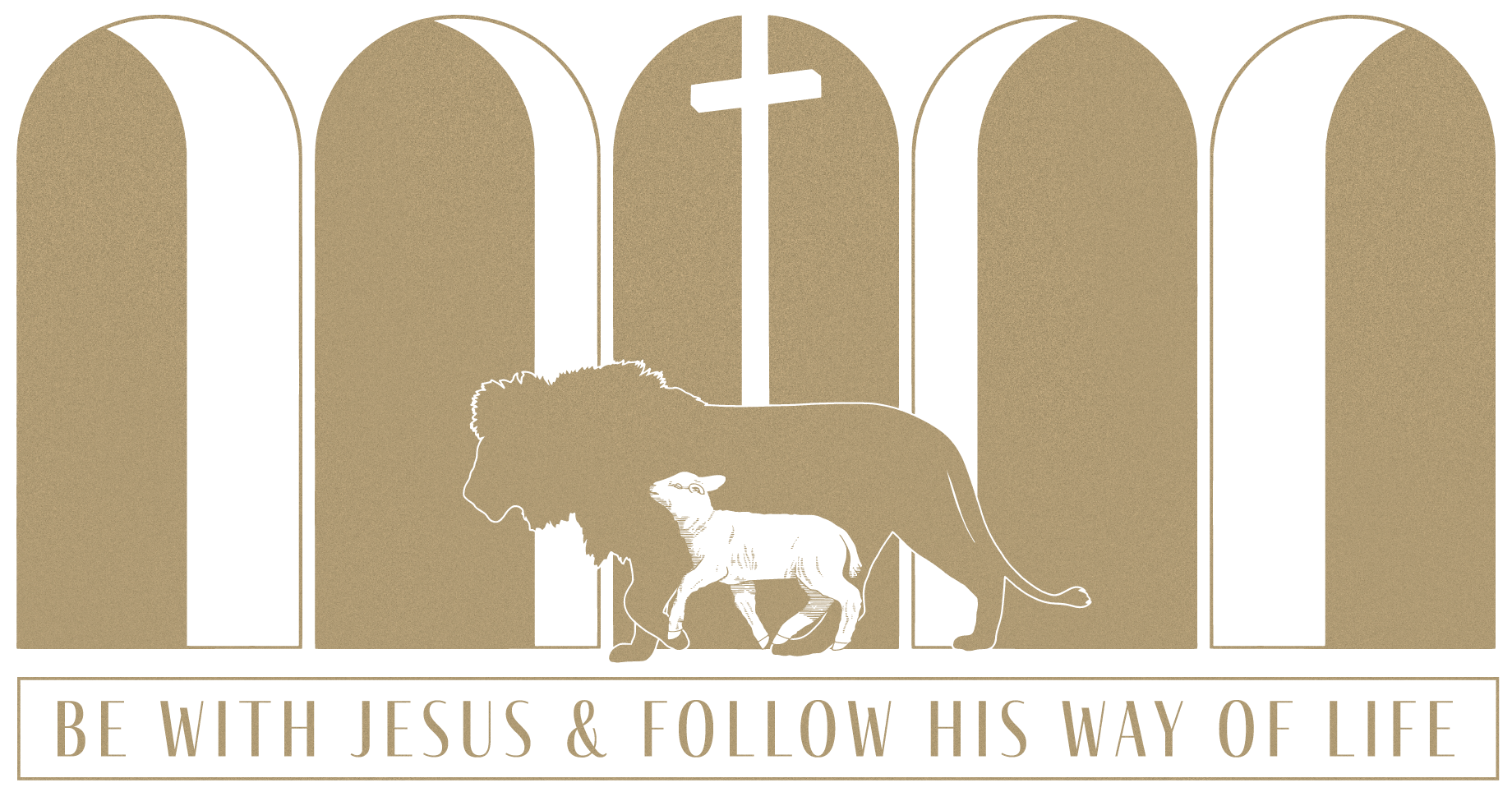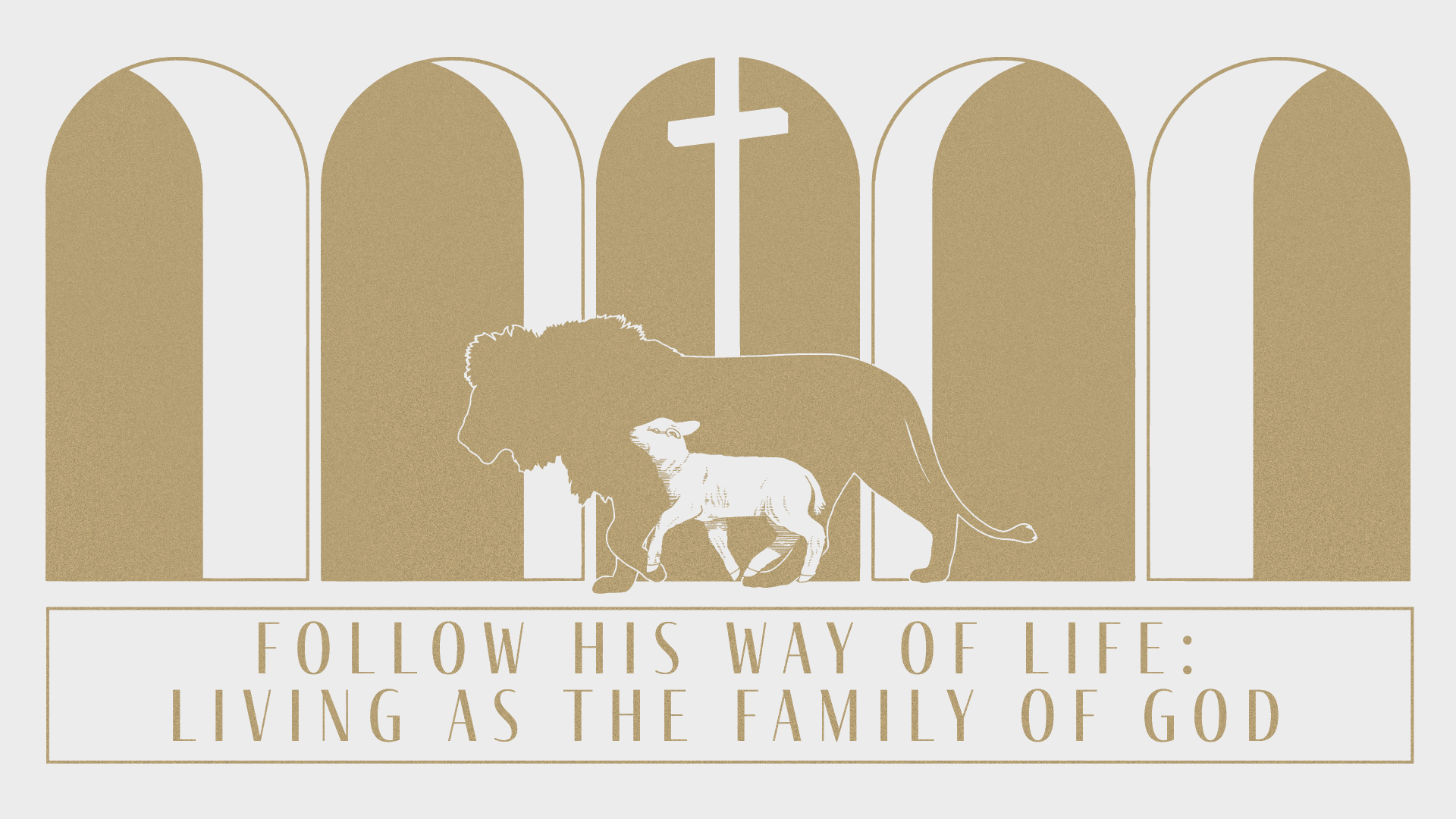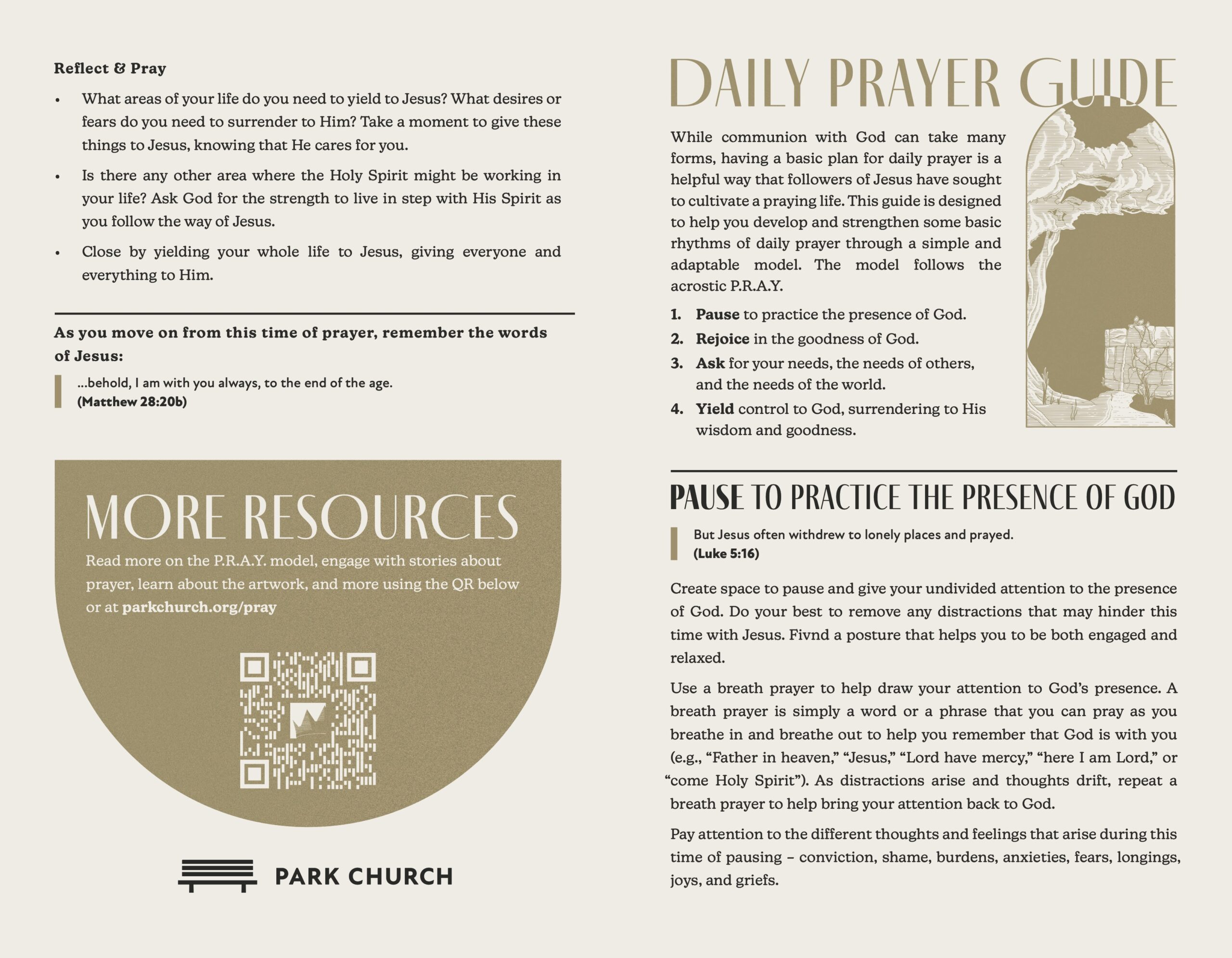The artwork for our series was made by Seth Coulter. Both the collection as a whole and each individual piece were created as a way to help us visualize our vision as a church: to be with Jesus and follow His way of life. To learn about one of the eight individual pieces, click on its image below. To start from the top, click the "overview" banner. All writing is from the artist, Seth.

Be with Jesus & follow His way of life
An Introduction to a Series of Reflections
by Seth Coulter
If we were to take the question ‘what is discipleship?’ to the text of the New Testament, we
would likely get an interesting answer back. A grand duality perhaps, a road that gives both
challenge and rest, a single wholeness constituted by two overlapping aspects, ‘to be with
Jesus, and follow His way of life.’ This final phrase captures this reality and serves as our
inspiration for this series of reflections.
Welcome to a collection of images meant to stir conversation, contemplation, respite, and
perhaps motion.
Our theme, this phrase, holds together two facets for consideration: being and following — yet
they are part of a whole, ‘in Him we live and move and have our being.’* And so with this in
mind, we approach two snapshot-scenes that may act as our frames or lenses through which
we might examine these layers: the woman at the well, and Peter leaving his boat behind with
a call to ‘follow.’ We might rightly say these are two moments, yet they are not isolated, they
are moments enfolded into a panoply of other moments, indeed they are stitched into a whole
story. The woman at the well encountered and spent time with Jesus, yet that being led to
action, and ‘many from that town believed’** because of her testimony of being — being with
Jesus. Likewise, Peter would be asked to follow, but enfolded into this following were moment
upon moment of being, being with the one who, indeed, gives being.
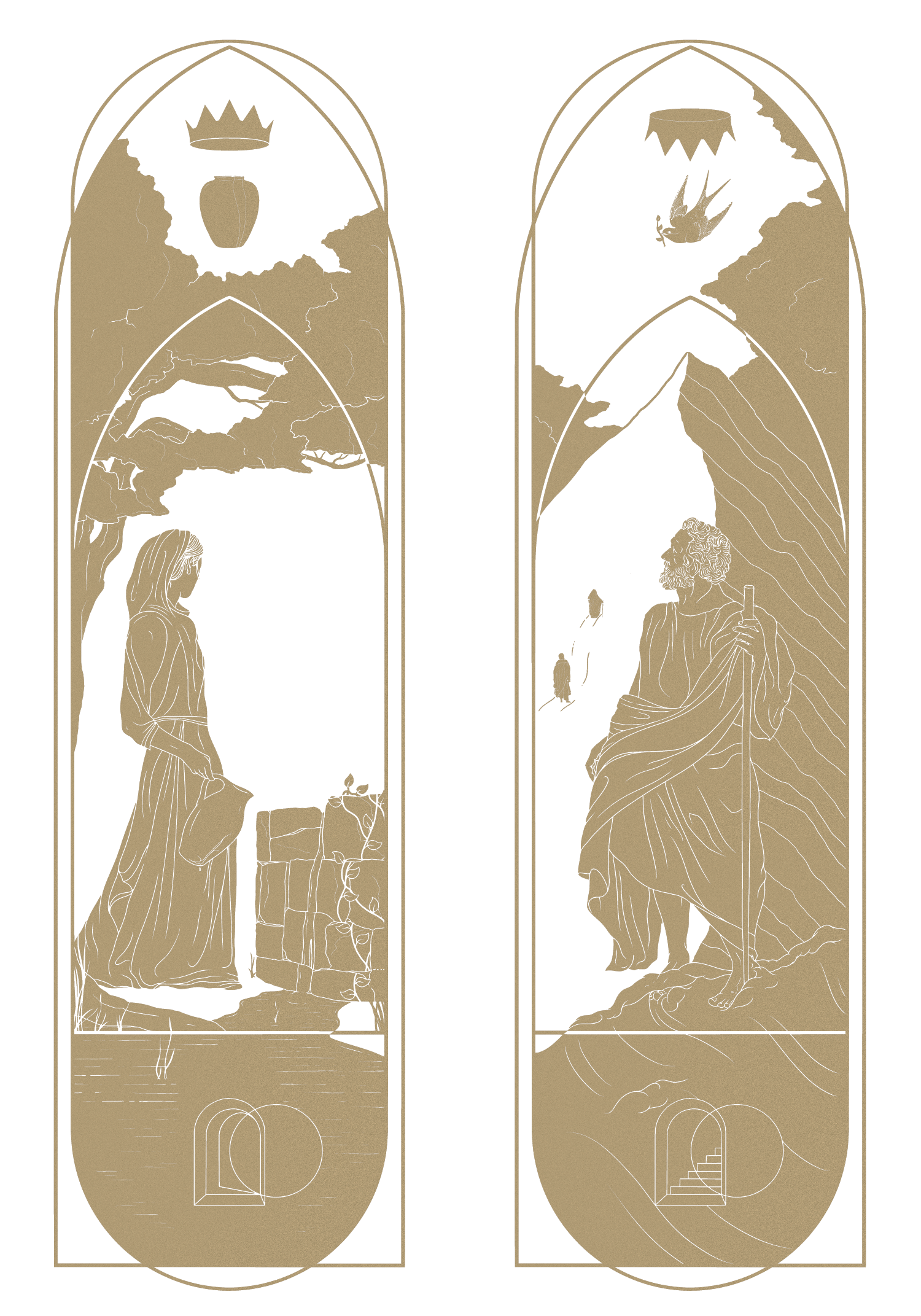
Before we get to the individual pieces, the two banners above are meant to interpret, compound, and play off of one another as an amalgamation of the ideas. Being and
following is the ancient cycle of proximity and trust, outworked in the attentive moments of a
whole life with the Christ who approaches and now calls to our whole life, our whole story.
*Acts 17:28 **John 4:39
At the Well
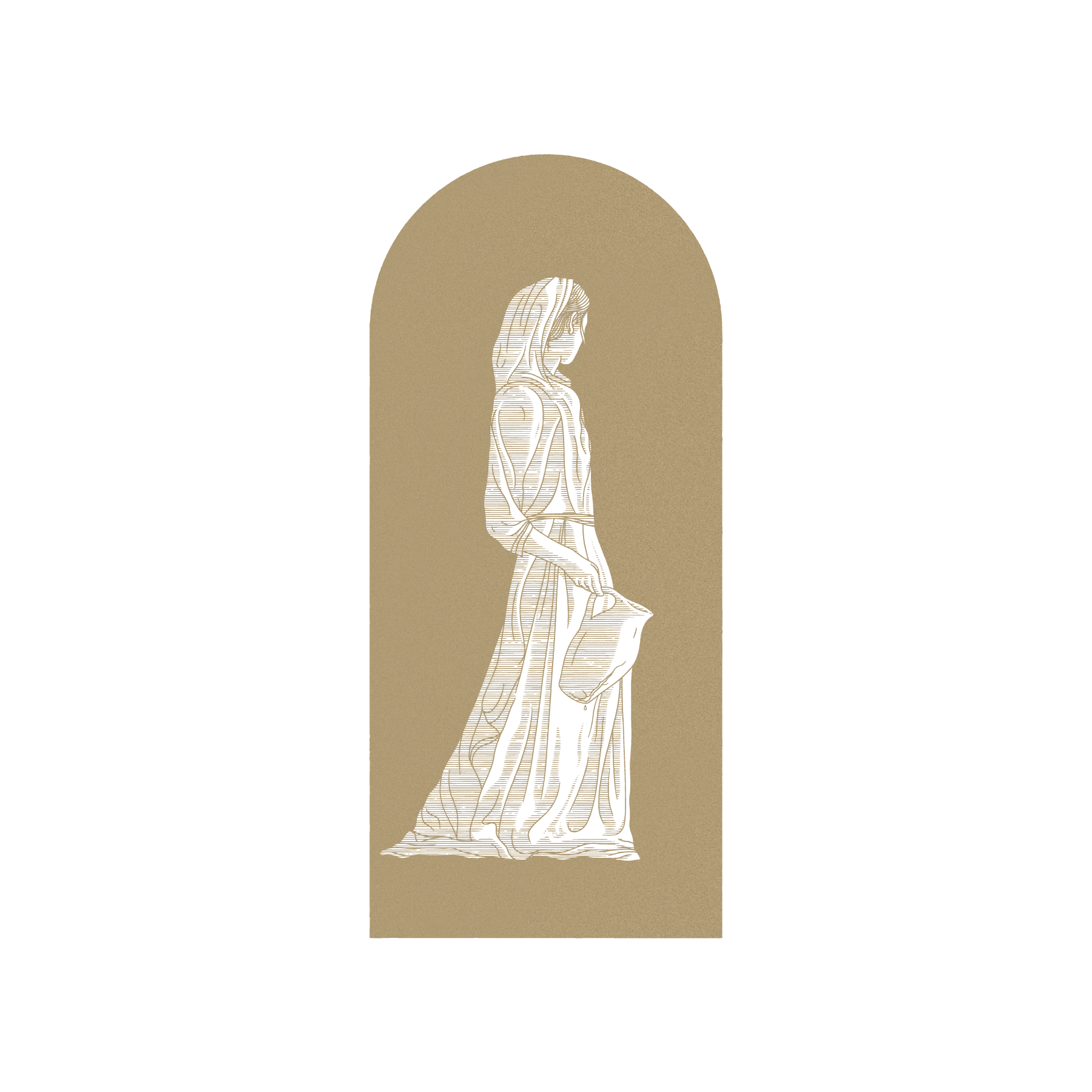 To witness the woman at the well is to understand something of the dynamism of the gospel — the euangelion, the good news. Perhaps we regularly consider the power of the gospel, but
here, in this story, we behold the nature of what this gospel expounds as ‘power.’ ‘There is
neither Jew nor Greek, there is neither slave nor free, there is no male and female, for you are all one in Christ Jesus.’* It is though we are witnessing the application of this Pauline verse here and now, with a refreshed dignity, and restored proximity. A new kingdom was arriving. And to say this message of kingdom did not engage the regular avenues of power first is to underplay the point, for when Jesus sees the woman at the well, He is seeing the unseen, and when He tells her His message of good news, He engages her perspective and begins construction on a kingdom that is no regular kingdom. There were different layers of ripple- effect that this kingdom brought: not only a power without decay, but also Life, a new resurrected life that would not fade, for as He saw the unseen, He also offered water as to
‘never be thirsty again.’** This woman encountered the incarnate God who saw her and offered
her more than she had ever known, this message would take her to her people, of which
‘many....believed.’*** She came impoverished to the well, but left with news of a Good
Kingdom, a different sort of kingdom, one streaming with resurrection.
To witness the woman at the well is to understand something of the dynamism of the gospel — the euangelion, the good news. Perhaps we regularly consider the power of the gospel, but
here, in this story, we behold the nature of what this gospel expounds as ‘power.’ ‘There is
neither Jew nor Greek, there is neither slave nor free, there is no male and female, for you are all one in Christ Jesus.’* It is though we are witnessing the application of this Pauline verse here and now, with a refreshed dignity, and restored proximity. A new kingdom was arriving. And to say this message of kingdom did not engage the regular avenues of power first is to underplay the point, for when Jesus sees the woman at the well, He is seeing the unseen, and when He tells her His message of good news, He engages her perspective and begins construction on a kingdom that is no regular kingdom. There were different layers of ripple- effect that this kingdom brought: not only a power without decay, but also Life, a new resurrected life that would not fade, for as He saw the unseen, He also offered water as to
‘never be thirsty again.’** This woman encountered the incarnate God who saw her and offered
her more than she had ever known, this message would take her to her people, of which
‘many....believed.’*** She came impoverished to the well, but left with news of a Good
Kingdom, a different sort of kingdom, one streaming with resurrection.
*Galatians 3:28 **John 4:14 ***John 4:39
Follow Me
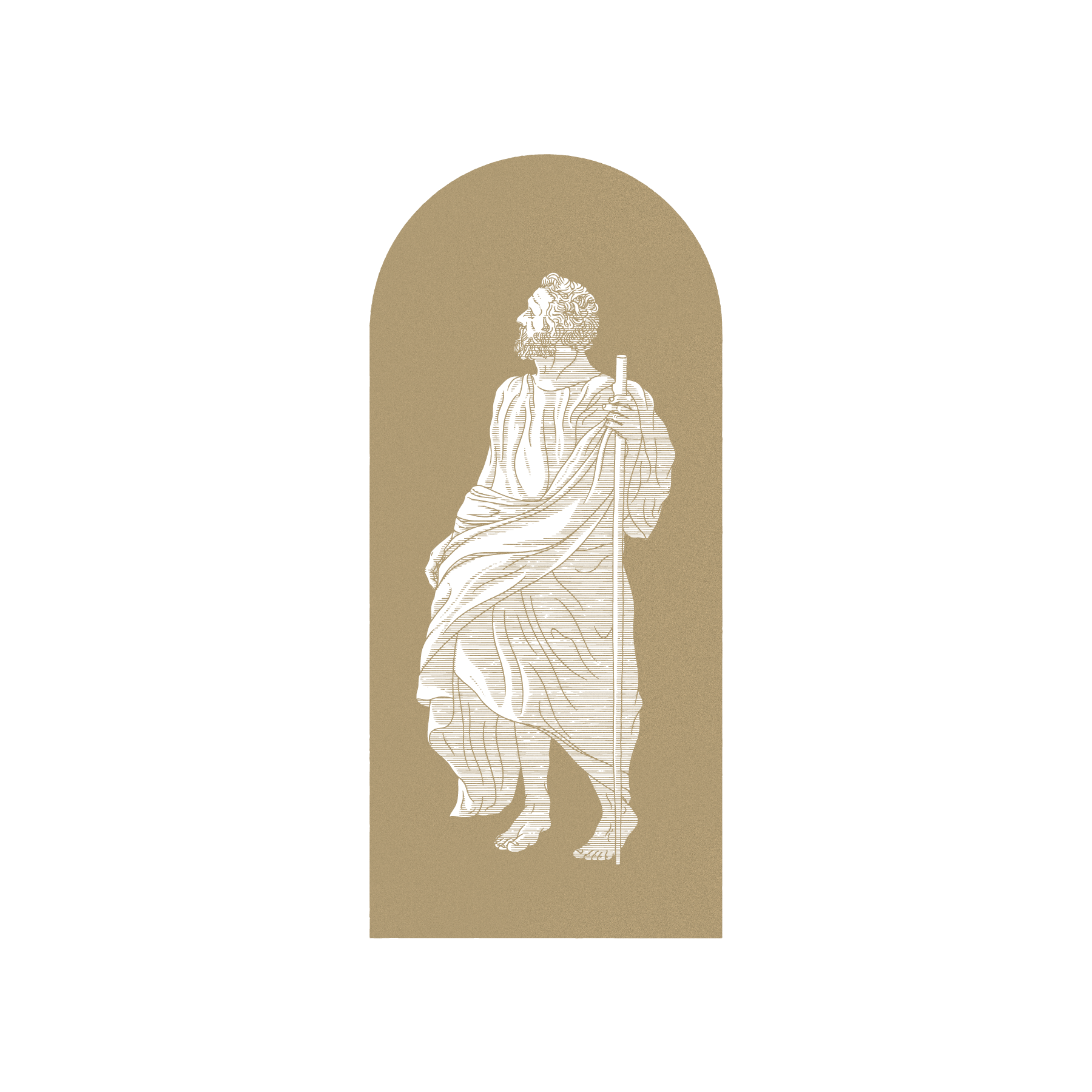 “Follow me,” this phrase, despite who says it, always unsettles the hearer. For at its base this
phrase is one that invokes trust — that the hearer trusts the speaker. This is what we witness
as Peter is called out of his boat, called ashore by Christ. This first invocation of trust is a
dynamic moment for Peter, and yet it leads to more. For this unsettling is not without purpose;
a gardener tills the ground before planting. To leave one’s boat is to leave one’s self-reliance,
self-dependence, and sense of control. Jesus offered more in every way. Without leaving, Peter
would have never met that grand road which led to places hitherto undreamed of in his life
before. ‘Lord, it is good that we are here,’* —a mountain, this surely was an apex moment in
Peter’s life, and yet it hadn’t happened yet, not at this moment of accepting-trust. First it took
stepping ashore, stepping into the wilderness for Peter to reach the mount where he would
witness Christ’s transfiguration. And yet that mountaintop was another moment of trust, and
one, that inevitably would lead to still others, for this mount of glory would be followed by
another, Zion, and a stunningly different sort of glory — a cross. But on this good road, the one
who leads, who issues, ‘Follow me,’ is in every way trustworthy. This cross would not be a
defeat, but a throne. To leave behind the boat, the nets, all of those trappings — this is no easy
thing, and yet the call rings still.
“Follow me,” this phrase, despite who says it, always unsettles the hearer. For at its base this
phrase is one that invokes trust — that the hearer trusts the speaker. This is what we witness
as Peter is called out of his boat, called ashore by Christ. This first invocation of trust is a
dynamic moment for Peter, and yet it leads to more. For this unsettling is not without purpose;
a gardener tills the ground before planting. To leave one’s boat is to leave one’s self-reliance,
self-dependence, and sense of control. Jesus offered more in every way. Without leaving, Peter
would have never met that grand road which led to places hitherto undreamed of in his life
before. ‘Lord, it is good that we are here,’* —a mountain, this surely was an apex moment in
Peter’s life, and yet it hadn’t happened yet, not at this moment of accepting-trust. First it took
stepping ashore, stepping into the wilderness for Peter to reach the mount where he would
witness Christ’s transfiguration. And yet that mountaintop was another moment of trust, and
one, that inevitably would lead to still others, for this mount of glory would be followed by
another, Zion, and a stunningly different sort of glory — a cross. But on this good road, the one
who leads, who issues, ‘Follow me,’ is in every way trustworthy. This cross would not be a
defeat, but a throne. To leave behind the boat, the nets, all of those trappings — this is no easy
thing, and yet the call rings still.
*Matthew 17:4
Wellspring
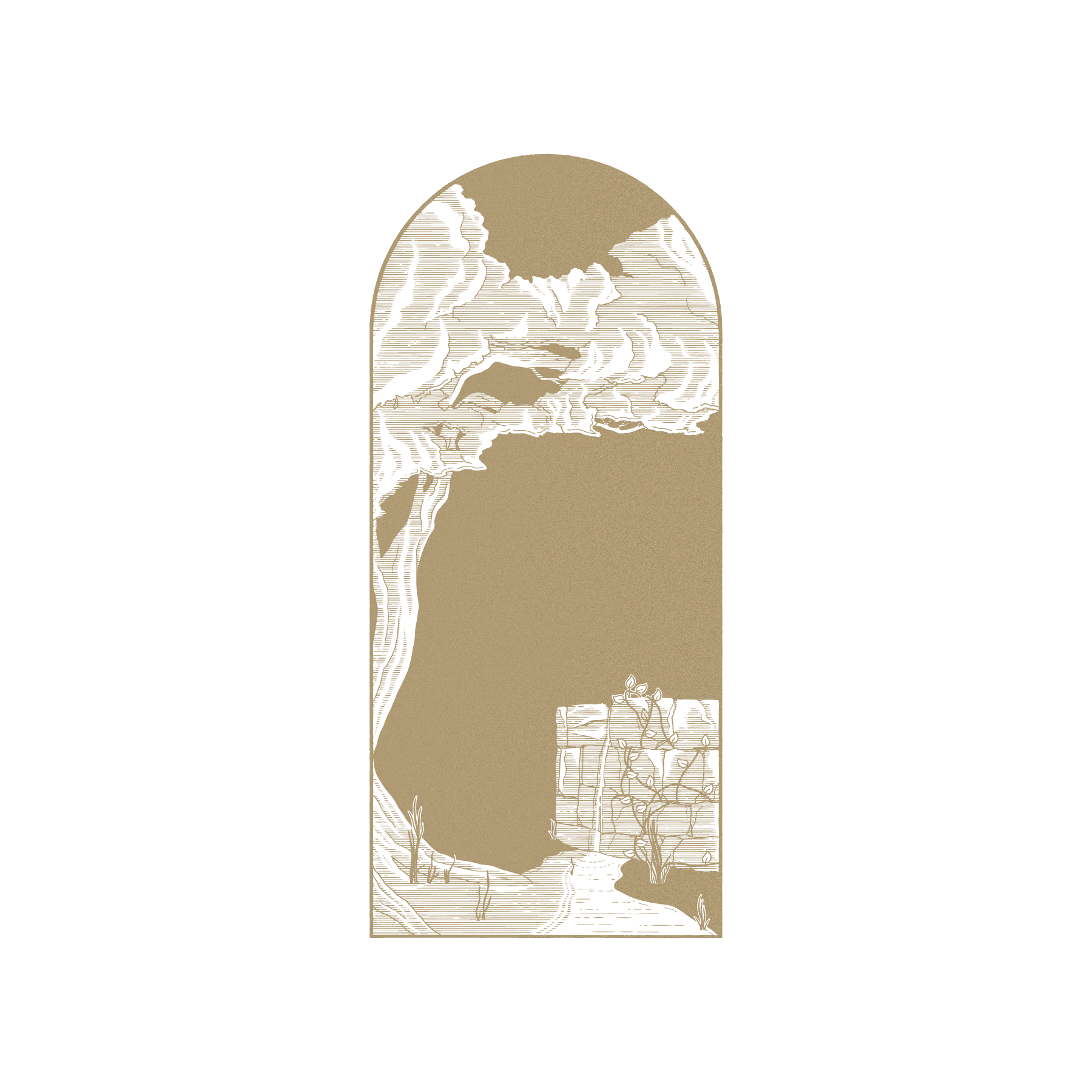 To ‘be’ is both a statement about activity, but also identity: to be here or there, to be oneself.
And as we consider the place of being, whether that is the well, at the feet of Christ, sitting on
windswept mountain tops, or by storm-settled lakes, what we are talking about is our attention.
We are reminded of this when we see the woman at the well stop what she was doing and
encounter Christ. We notice it also as Mary sits to listen, and to learn. To be with Christ is to be
present with him, but in the mystery of that activity, it also starts to work on who we are.
Activity and identity taking on new meaning. Transformation in stillness seems counterintuitive
in a world of encouraged business, but that is exactly what we see here — rest without
drowsiness, perhaps more awake than ever before. This encounter both changed how they
acted, but also why they acted, as though a new Kingdom Citizenship led to new set of
customs, a new way of being.
To ‘be’ is both a statement about activity, but also identity: to be here or there, to be oneself.
And as we consider the place of being, whether that is the well, at the feet of Christ, sitting on
windswept mountain tops, or by storm-settled lakes, what we are talking about is our attention.
We are reminded of this when we see the woman at the well stop what she was doing and
encounter Christ. We notice it also as Mary sits to listen, and to learn. To be with Christ is to be
present with him, but in the mystery of that activity, it also starts to work on who we are.
Activity and identity taking on new meaning. Transformation in stillness seems counterintuitive
in a world of encouraged business, but that is exactly what we see here — rest without
drowsiness, perhaps more awake than ever before. This encounter both changed how they
acted, but also why they acted, as though a new Kingdom Citizenship led to new set of
customs, a new way of being.
Wilds
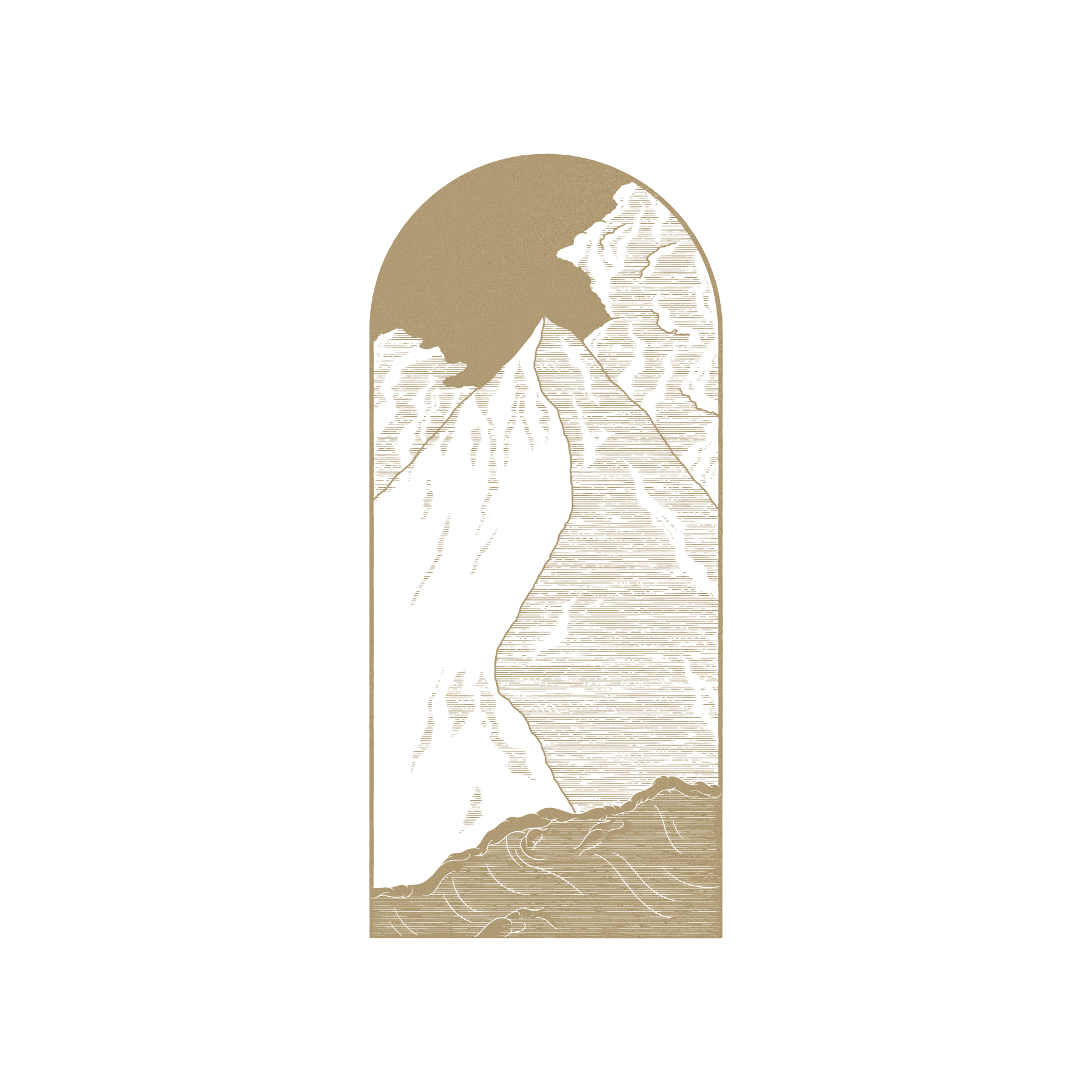 To follow Christ, is to walk a good road, indeed, the good road. But that does not mean it is a
tame road. As we consider the road of following, we consider both the beauty, but also the
wildness of it. This is the second layer. We might consider the wilderness road to be one that
we do on our own, and yet it is then that we are quickly reminded that we are not forgotten
here, indeed in every way Christ knows this road intimately and encourages us on, ‘follow me,’
and so it is step by step we go, He shares the yoke with us.* Yet there is another lens we need
to peer through. This road is personal, but it does not have to be isolating, as we look to our
left and right we see this is the highway of the Christian faith, and there is a great multitude
here, here on the road cutting through the wilderness. So we might say that we understand
being in the garden, but we understand trust in the wild, untamed places. Those places that are
both challenging and beautiful, and yet like Peter on the mountain, we are compelled to
exclaim, ‘Lord, it is good that we are here.’**
To follow Christ, is to walk a good road, indeed, the good road. But that does not mean it is a
tame road. As we consider the road of following, we consider both the beauty, but also the
wildness of it. This is the second layer. We might consider the wilderness road to be one that
we do on our own, and yet it is then that we are quickly reminded that we are not forgotten
here, indeed in every way Christ knows this road intimately and encourages us on, ‘follow me,’
and so it is step by step we go, He shares the yoke with us.* Yet there is another lens we need
to peer through. This road is personal, but it does not have to be isolating, as we look to our
left and right we see this is the highway of the Christian faith, and there is a great multitude
here, here on the road cutting through the wilderness. So we might say that we understand
being in the garden, but we understand trust in the wild, untamed places. Those places that are
both challenging and beautiful, and yet like Peter on the mountain, we are compelled to
exclaim, ‘Lord, it is good that we are here.’**
*Matthew 11:30 **Matthew 17:4
Being
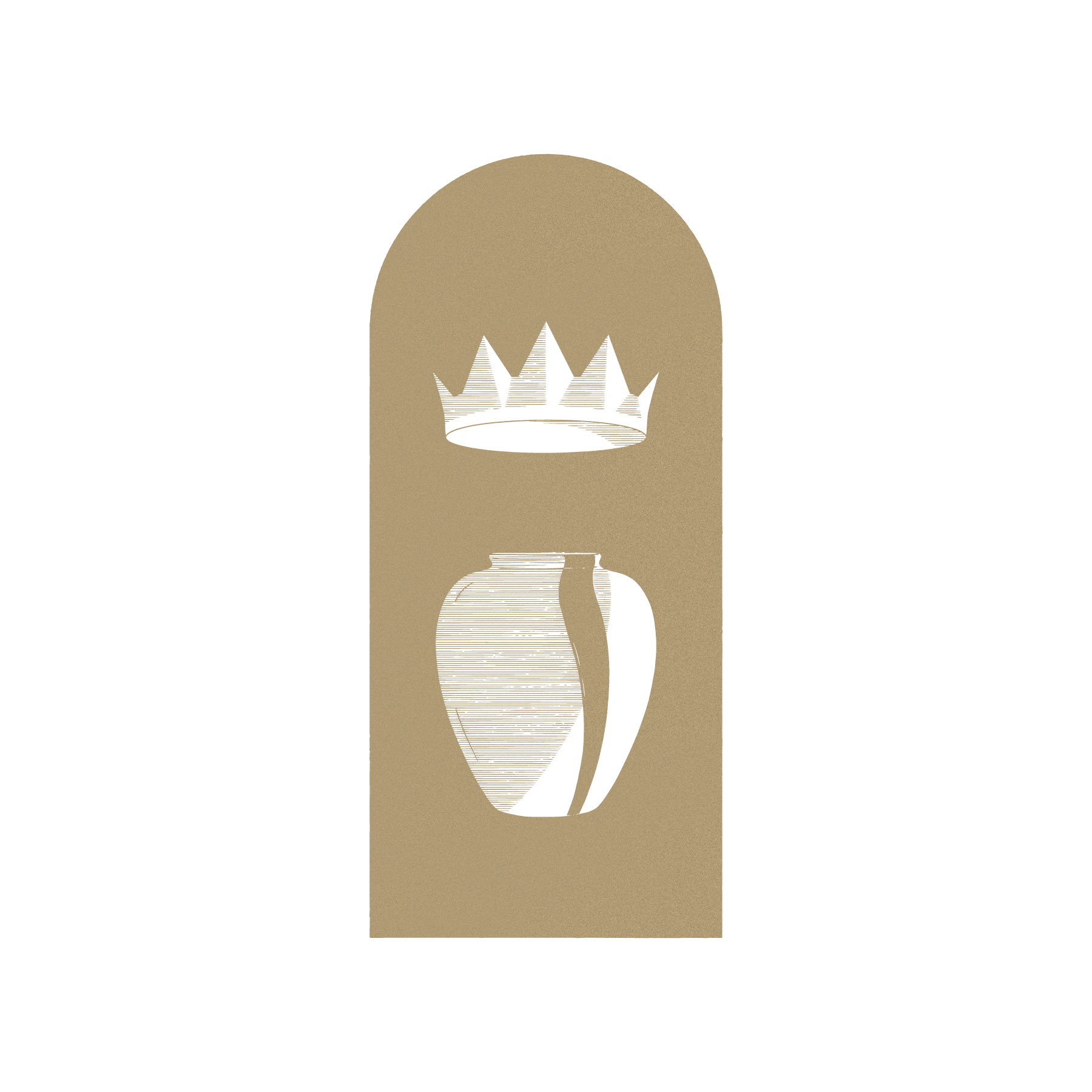 A crown. Perhaps overused in its ubiquitousness — but, and here is the difference, this is its
natural home, for we are talking about the God who is King. So why is it included within this
image-landscape of discipleship? It’s because as we think about being with Jesus, we are also
quickly reminded that we are enfolded into His kingship, Paul explores this in his letter to the
Romans. Because of the Second Adam, we begin to realize our delegated-vocation once
again. And yet there is a second image included here, the alabaster jar. As we remember we
are co-heirs, we remember the lesson of the Ephesian church addressed in Revelation,* we will
not forget our ‘first love’ — Christ himself. Our love leads to action, but without love, those
actions become hollow as if only clanging cymbals.**
A crown. Perhaps overused in its ubiquitousness — but, and here is the difference, this is its
natural home, for we are talking about the God who is King. So why is it included within this
image-landscape of discipleship? It’s because as we think about being with Jesus, we are also
quickly reminded that we are enfolded into His kingship, Paul explores this in his letter to the
Romans. Because of the Second Adam, we begin to realize our delegated-vocation once
again. And yet there is a second image included here, the alabaster jar. As we remember we
are co-heirs, we remember the lesson of the Ephesian church addressed in Revelation,* we will
not forget our ‘first love’ — Christ himself. Our love leads to action, but without love, those
actions become hollow as if only clanging cymbals.**
*Revelation 2:4 **1 Corinthians 13:1
Following
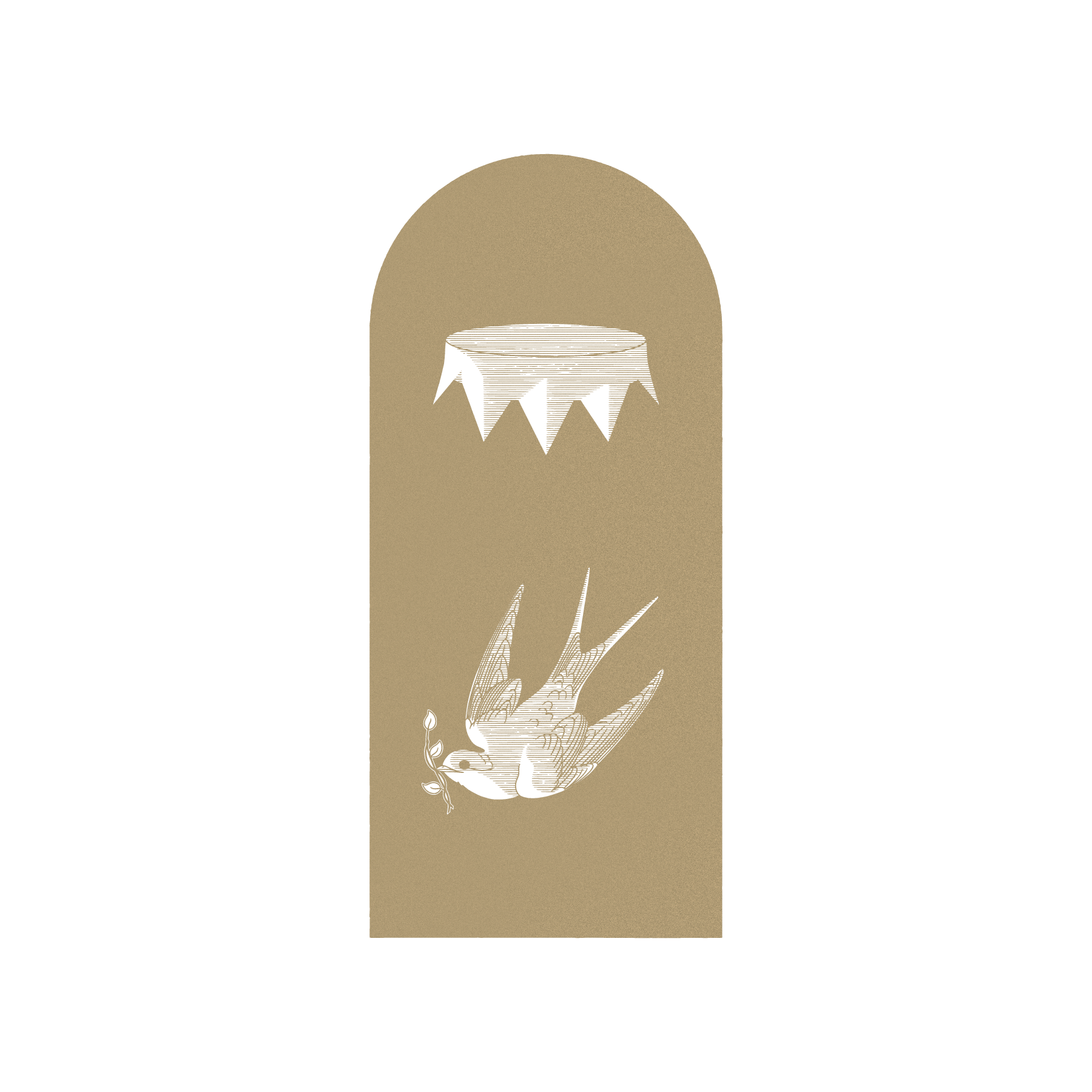 To imagine a crown might with it include certain ways of considering power, and the wielding of
it. And, so, we consider the nature of this Upside-down Kingdom. Its King is one acquainted
with grief, born in a meager stable, yet, the King of All.* And, ‘who, though he was in the form
of God, did not count equality with God a thing to be grasped, but emptied himself, by taking
the form of a servant.’** This King saw suffering and entered it, disarming it and making it a
means of salvation. And so this kingdom is one where the Beatitudes, plowshares hewn from
swords, and a Servant-King reshapes what we consider about power itself. And yet it is not
only a crown we have imaged here, but also a bird and a vine: a promise remembered, ‘Abide
in me, and I in you. I am the vine; you are the branches.’*** This vine merges with the image of
the bird — for if God in heaven cares for such little creatures, will he not care for us? This
question and its answer resounds and enlightens our road through the wilderness, and we
dwell in this remembrance: we are never far from His presence.****
To imagine a crown might with it include certain ways of considering power, and the wielding of
it. And, so, we consider the nature of this Upside-down Kingdom. Its King is one acquainted
with grief, born in a meager stable, yet, the King of All.* And, ‘who, though he was in the form
of God, did not count equality with God a thing to be grasped, but emptied himself, by taking
the form of a servant.’** This King saw suffering and entered it, disarming it and making it a
means of salvation. And so this kingdom is one where the Beatitudes, plowshares hewn from
swords, and a Servant-King reshapes what we consider about power itself. And yet it is not
only a crown we have imaged here, but also a bird and a vine: a promise remembered, ‘Abide
in me, and I in you. I am the vine; you are the branches.’*** This vine merges with the image of
the bird — for if God in heaven cares for such little creatures, will he not care for us? This
question and its answer resounds and enlightens our road through the wilderness, and we
dwell in this remembrance: we are never far from His presence.****
*Isaiah 53:3 / Luke 2:7 **Philippians 2:6–7 ***John 15:4-5 ****Psalm 139:8
Abide
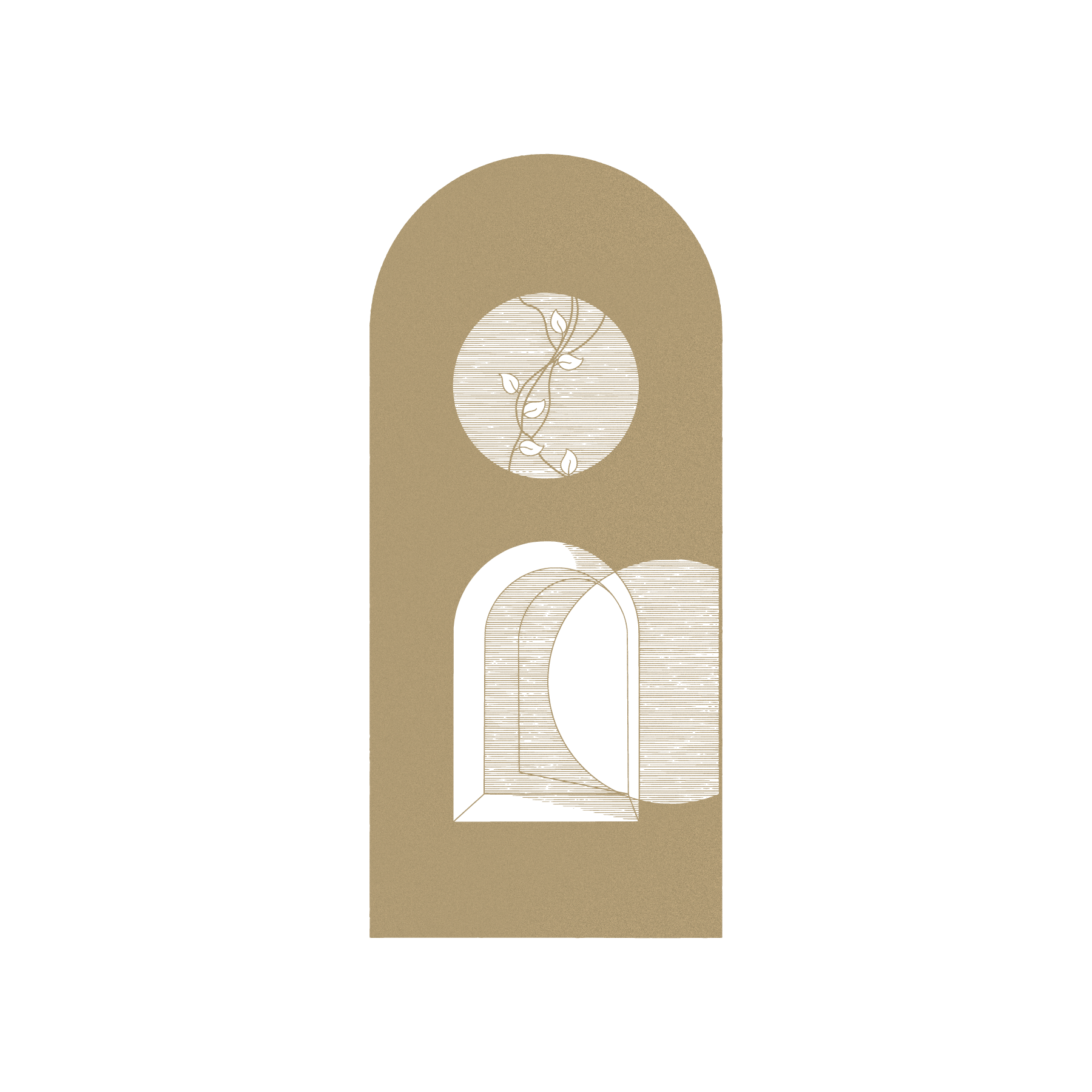 Here we consider two more images, but again they find connection with one another. Jesus is
the true vine,* the life everlasting, and our life finds its place in Him — we are grafted in as a
branch is to the main plant and the nutrients of its roots.** And so we are in every way
‘welcomed in,’ this is also the meaning of the second image of the ‘door,’ we have been
welcomed in and now dwell, abide, live in Christ. Yet this door is no ordinary door, it is a
double-imaged door, this door of welcome was opened by another, one with a rolled away
stone.
Here we consider two more images, but again they find connection with one another. Jesus is
the true vine,* the life everlasting, and our life finds its place in Him — we are grafted in as a
branch is to the main plant and the nutrients of its roots.** And so we are in every way
‘welcomed in,’ this is also the meaning of the second image of the ‘door,’ we have been
welcomed in and now dwell, abide, live in Christ. Yet this door is no ordinary door, it is a
double-imaged door, this door of welcome was opened by another, one with a rolled away
stone.
*John 15:1 **Romans 11:17
Journey
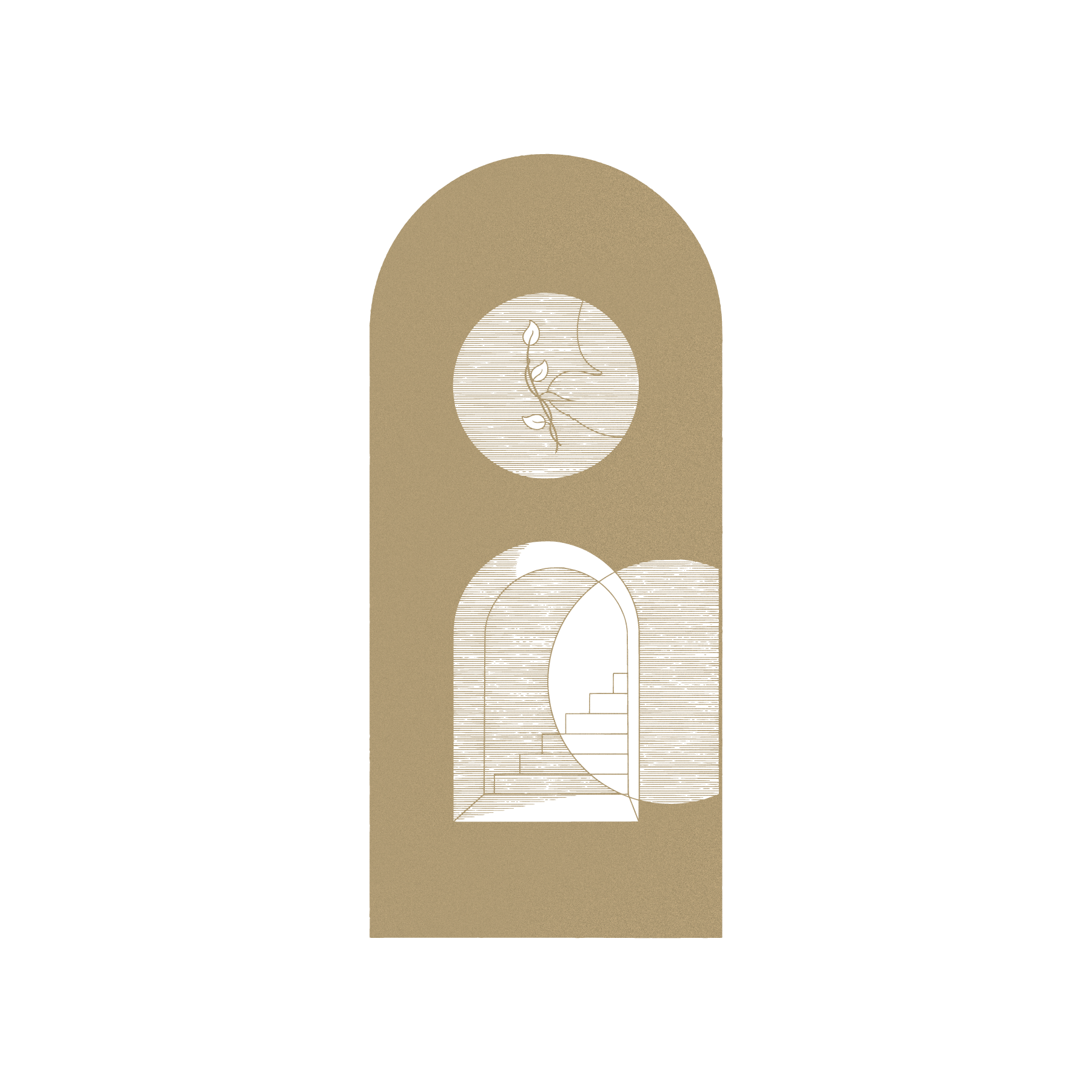 We engage our last two images here. We return to the bird and the vine: the life of God and the
love of God, and it is here, in following, on the road, that we remember those promises. He is
not far from us, indeed he is with us ‘always, to the very end of the age.’* We return also to the
double-imaged door, but with a difference: our dwelling engages, and overlaps our following,
and as we consider what it is to be with Jesus, we are reminded of the other half of the couplet,
we follow Him into exciting, unknown places, ushered forth by that captivating, ‘follow me.’
Step by step we go, called by the one who is altogether trustworthy.
We engage our last two images here. We return to the bird and the vine: the life of God and the
love of God, and it is here, in following, on the road, that we remember those promises. He is
not far from us, indeed he is with us ‘always, to the very end of the age.’* We return also to the
double-imaged door, but with a difference: our dwelling engages, and overlaps our following,
and as we consider what it is to be with Jesus, we are reminded of the other half of the couplet,
we follow Him into exciting, unknown places, ushered forth by that captivating, ‘follow me.’
Step by step we go, called by the one who is altogether trustworthy.
*Matthew 28:20
See more of Seth’s work at saintbrigand.com or on Instagram at @saintbrigand.
